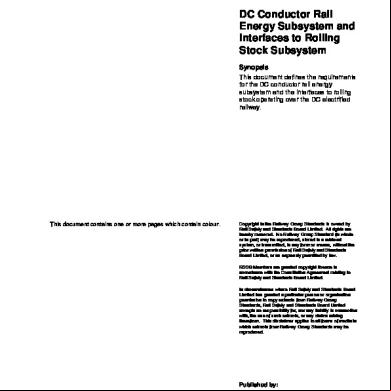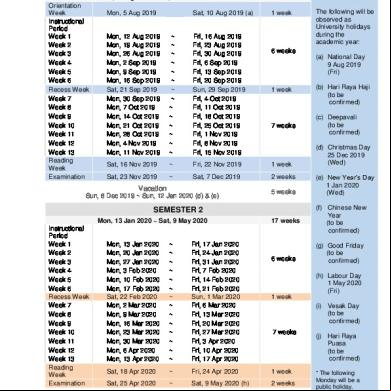Railway Standard (en-50128) 474x5x
This document was ed by and they confirmed that they have the permission to share it. If you are author or own the copyright of this book, please report to us by using this report form. Report 3b7i
Overview 3e4r5l
& View Railway Standard (en-50128) as PDF for free.
More details w3441
- Words: 315
- Pages: 44
RAILWAY STANDARD (EN-50128) Presented By: Maryam Zahid [16I-1020] Tooba Yonus [16I-10] Malik Danial Zafar [16I-10] Vania Ammad [16I-1035]
Contents • Introduction • Relationship with other standards • Safety Integrity Levels • Roles and Requirements at SIL levels
• Standards applied to software. Why? • Standards applied to software. How? • Example Application of SIL • Problem of representing software SIL
Introduction
Relationship with other standards
Safety Integrity Levels
Roles and Requirements at SIL levels • Different actor involved in different phases of SDLC • Project Manager (PM) • Requirements Manager (RQM) • Designer (DES) • Implementer (IMP) • Tester (TST) – component and overall testing • Integrator (INT) – integration testing • Verifier (VER) – static verification • Validator (VAL) – overall satisfaction of requirements • Assessor (ASR) – external reviewer
Why standards are applied to SDLC ? • A hazard is a state or set of conditions of a system that,
together with other conditions in the environment of the system will lead inevitably to an accident • Testing not enough • Application of standards on the basis of SIL levels in SDLC allows developers to reduce the probability of a failure leading to an undesired event
How are the standards applied to SDLC ?
1. Software Design and Implementation
2. Verification and Testing
3. Integration and Overall Software Testing
4. Software Analysis Techniques
5. Coding Standards
6. Dynamic Analysis and Testing
7. Functional and Black Box Testing
8. Static Analysis
9. Components
10. Test Coverage for Code
11. Object Oriented Architecture and Detailed Design
Example Application
Step # 1: Fault Tree
Step # 2: Probability of Failure Assigned to root nodes
Step # 3: Overall Probability of Failure calculated
Problem representing software SIL • Difficult to accurately represent a complex system using
Fault Tree • Hazard rates cannot be demonstrated by quantitative analysis • General techniques do not exist • Estimation is questionable
Contents • Introduction • Relationship with other standards • Safety Integrity Levels • Roles and Requirements at SIL levels
• Standards applied to software. Why? • Standards applied to software. How? • Example Application of SIL • Problem of representing software SIL
Introduction
Relationship with other standards
Safety Integrity Levels
Roles and Requirements at SIL levels • Different actor involved in different phases of SDLC • Project Manager (PM) • Requirements Manager (RQM) • Designer (DES) • Implementer (IMP) • Tester (TST) – component and overall testing • Integrator (INT) – integration testing • Verifier (VER) – static verification • Validator (VAL) – overall satisfaction of requirements • Assessor (ASR) – external reviewer
Why standards are applied to SDLC ? • A hazard is a state or set of conditions of a system that,
together with other conditions in the environment of the system will lead inevitably to an accident • Testing not enough • Application of standards on the basis of SIL levels in SDLC allows developers to reduce the probability of a failure leading to an undesired event
How are the standards applied to SDLC ?
1. Software Design and Implementation
2. Verification and Testing
3. Integration and Overall Software Testing
4. Software Analysis Techniques
5. Coding Standards
6. Dynamic Analysis and Testing
7. Functional and Black Box Testing
8. Static Analysis
9. Components
10. Test Coverage for Code
11. Object Oriented Architecture and Detailed Design
Example Application
Step # 1: Fault Tree
Step # 2: Probability of Failure Assigned to root nodes
Step # 3: Overall Probability of Failure calculated
Problem representing software SIL • Difficult to accurately represent a complex system using
Fault Tree • Hazard rates cannot be demonstrated by quantitative analysis • General techniques do not exist • Estimation is questionable










